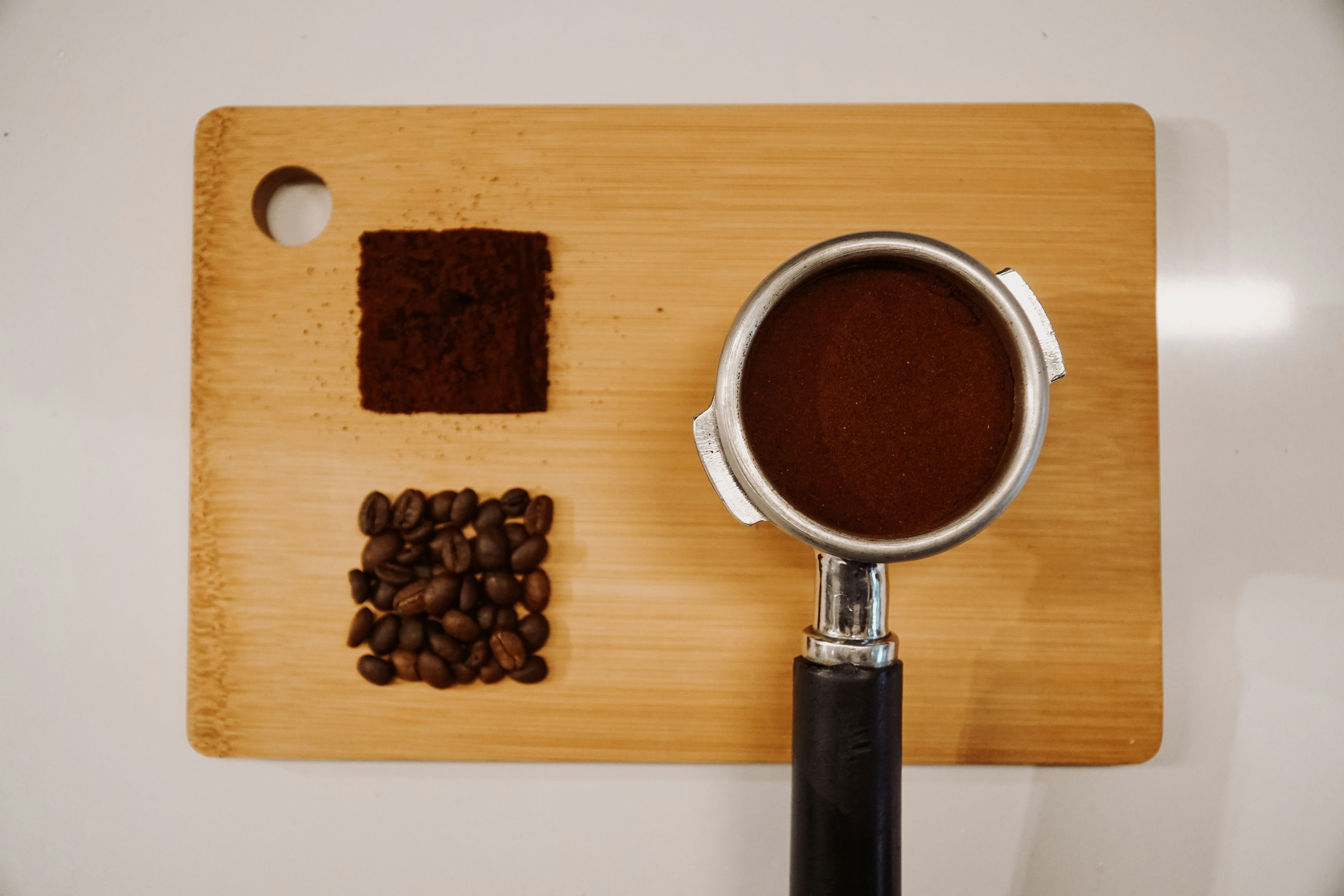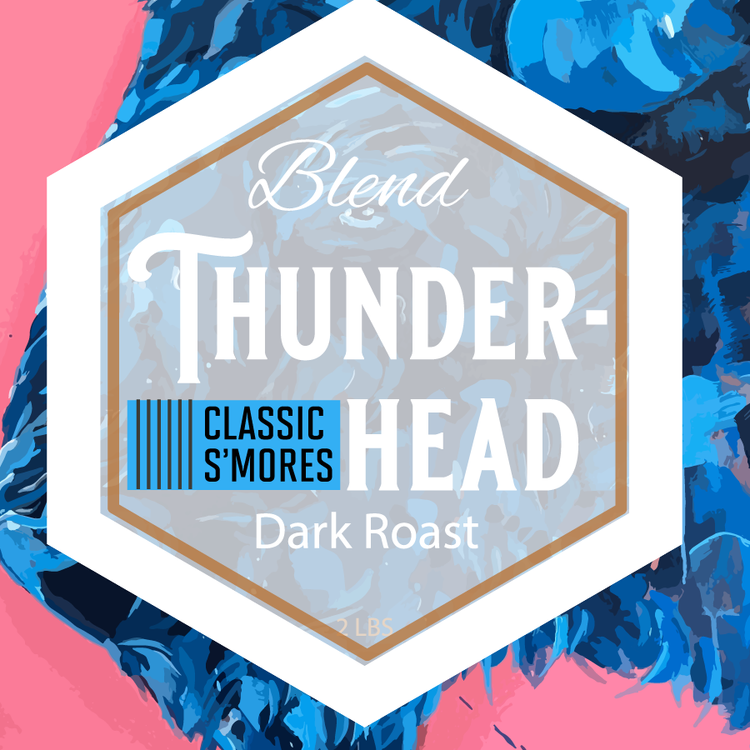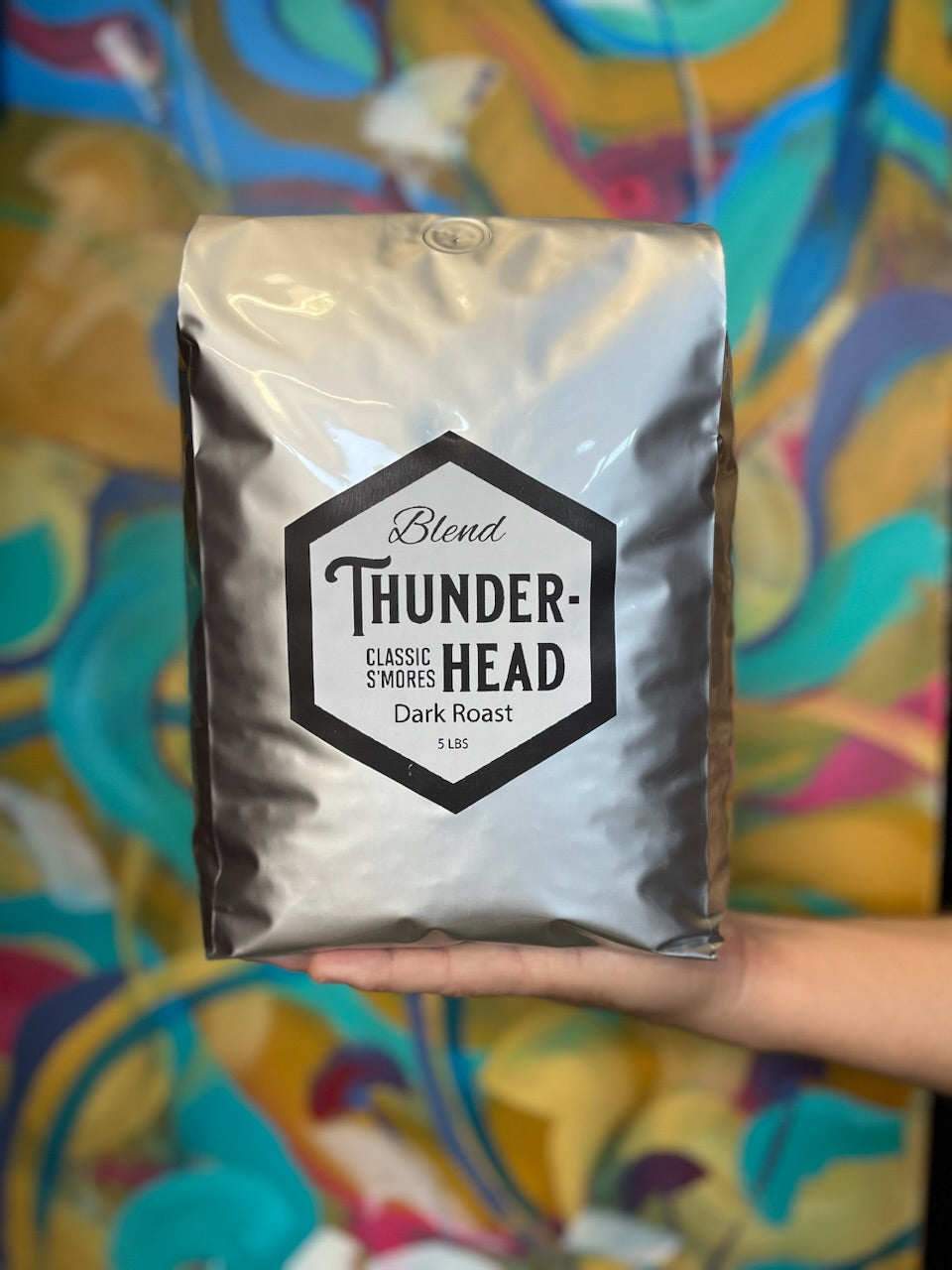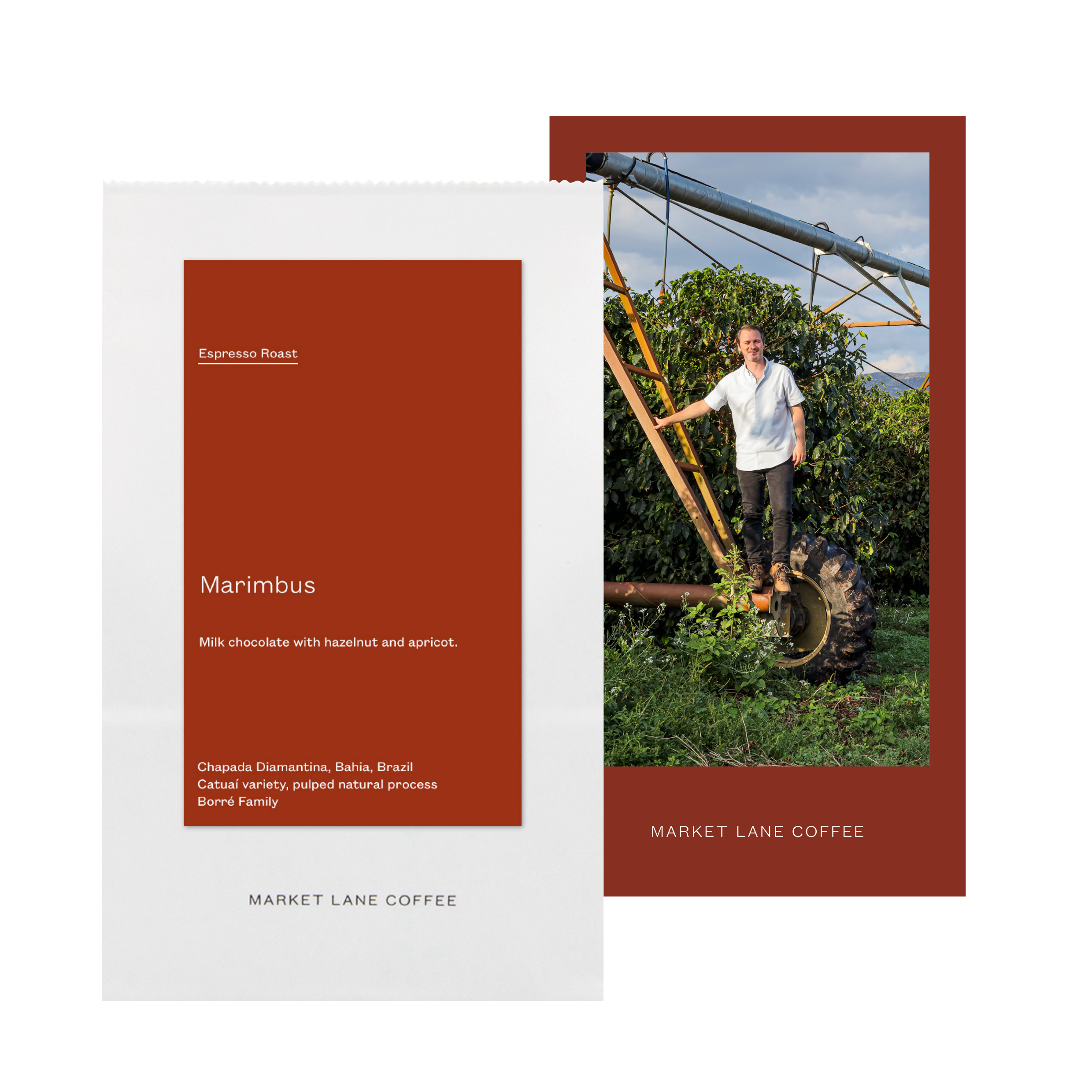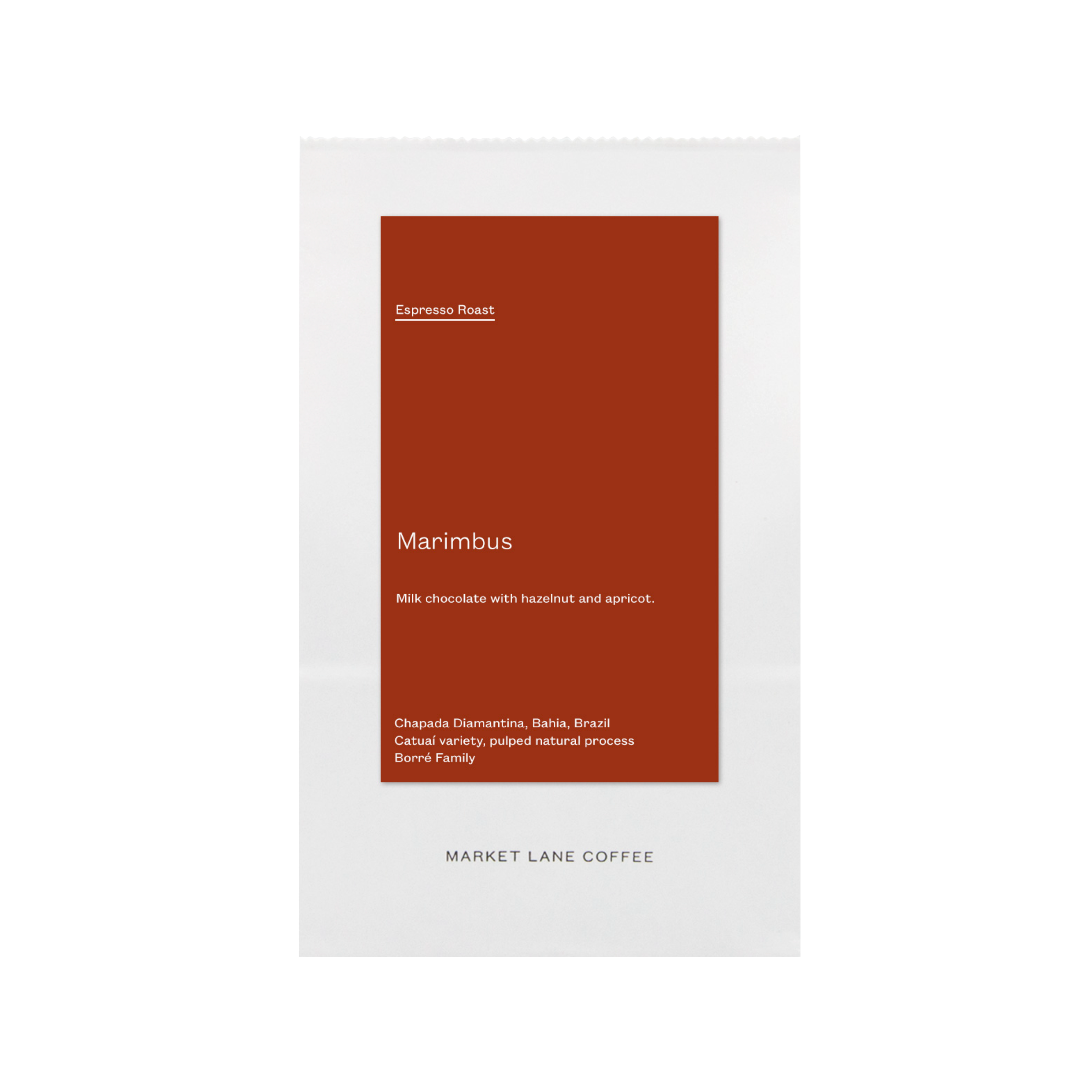The Transformative Power of Freshly Ground Coffee
A Science-Based Exploration.
In a corner of Onyx Coffee Lab in northwest Arkansas, Scott Lucey methodically weighs 20 grams of whole coffee beans—a luminous, honey-processed Guatemalan from Finca El Injerto. He places them in a hand-crafted Comandante grinder, turning the handle with deliberate precision. "Thirty seconds ago, these beans contained their full potential," he explains, inhaling deeply as the first fragments fall. "Now we're on the clock."
This ritual—grinding coffee moments before brewing—is not merely performative. According to coffee scientists and industry professionals, it represents perhaps the single most consequential decision in determining the quality of your daily brew. But why does such a seemingly simple act create such a profound difference? The answer lies at the intersection of chemistry, physics, and our evolving understanding of coffee as both art and science.
The Volatile Symphony: Understanding Coffee's Fragile Chemistry
Dr. Chahan Yeretzian, head of the Coffee Excellence Center at the Zurich University of Applied Sciences, has dedicated his career to understanding coffee's complex chemical profile. "A single coffee bean contains over 1,000 aroma compounds," he explains. "Many of these compounds are incredibly volatile, meaning they evaporate quickly when exposed to air."
His laboratory research has quantified this volatility with striking clarity. Using gas chromatography and mass spectrometry, Yeretzian's team has demonstrated that ground coffee loses more than 60% of its signature aromatic compounds within 15 minutes of grinding. After an hour, that loss exceeds 80%.
"These aren't just any compounds," Yeretzian emphasizes. "These are the most distinctive and pleasing aromatic elements—the fruity esters, the floral aldehydes, the complex furans that differentiate an exceptional coffee from a mediocre one."
Emma Bladyka, former coffee science manager at the Specialty Coffee Association, notes that this chemical transformation manifests as a flattening of flavor. "Pre-ground coffee might retain its basic taste structure—bitterness, acidity, body—but loses the delicate top notes and aromatic complexity that make specialty coffee remarkable," she explains. "It's like listening to an orchestra where all the string instruments have been removed."
Surface Chemistry: The Exponential Exposure Effect
Beyond the loss of volatile compounds, grinding fundamentally alters coffee's physical structure in ways that accelerate degradation. When a coffee bean is whole, relatively little of its surface area is exposed to oxygen. A standard coffee bean has approximately 0.5 square centimeters of surface area. Grind that same bean to a medium consistency appropriate for drip brewing, and the surface area expands to roughly 100 square centimeters—a 200-fold increase.
"This dramatic increase in surface area doesn't just release aromas—it initiates a cascade of oxidative reactions," explains Christopher H. Hendon, assistant professor of computational materials chemistry at the University of Oregon and co-author of "Water for Coffee."
These oxidative processes are the same chemical reactions that cause cut apples to brown or metal to rust. In coffee, oxidation degrades the compounds responsible for pleasant flavors while simultaneously creating new compounds associated with rancidity and staleness.
"Coffee contains a significant amount of lipids—between 7 and 17 percent depending on the variety," Hendon notes. "These lipids are particularly susceptible to oxidation, which creates hydroperoxides and eventually aldehydes and ketones that contribute off-flavors."
Studies published in the Journal of Agricultural and Food Chemistry have documented that lipid oxidation accelerates dramatically within minutes of grinding. After just 30 minutes, measurable rancidity markers increase by over 300%, even without exposure to heat.
Buy Dark Roast Specialty Coffee
The Grinding Mechanism: Not All Methods Are Equal
The method by which coffee is ground significantly impacts both immediate flavor and degradation rate. The two primary grinding mechanisms—blade and burr—create fundamentally different particle distributions.
At Parlor Coffee Roasters in Brooklyn, head roaster Charles Webb demonstrates the difference by grinding identical coffees with two different mechanisms. Under a digital microscope, the disparities become obvious. The blade-ground coffee resembles a chaotic landscape of disparate particles—some powder-fine, others relatively large fragments. The burr-ground sample, by contrast, shows remarkably consistent particle sizing.
"This inconsistency in blade grinders creates massive problems during extraction," Webb explains. "The fine particles over-extract quickly, releasing bitter compounds, while the larger pieces remain under-extracted, leaving desirable flavors locked inside."
Dr. William Ristenpart, who directs the Coffee Center at UC Davis, has studied this phenomenon extensively. His research demonstrates that inconsistent grind size can create up to a 30% variation in extraction yield across particles, leading to simultaneously bitter and sour flavors—what coffee professionals often describe as "muddy" or "confused" taste profiles.
"Even professional-grade burr grinders produce a distribution of particle sizes," Ristenpart clarifies. "But the narrower that distribution, the more controlled and predictable the extraction process becomes."
The highest-end commercial grinders can achieve what's called a "unimodal" particle distribution, where the vast majority of particles fall within a very tight size range. These grinders use precisely machined burrs rotating at specific speeds to create particles that extract at similar rates, producing clearer, more defined flavor profiles.
Grinding as a Canvas: Adapting to Different Brewing Methods
Specialty coffee professionals view grind size as a critical variable to be adjusted based on brewing method, bean density, roast profile, and even ambient humidity. Each brewing method creates unique conditions—pressure, temperature, contact time—that require specific particle sizes for optimal extraction.
"Espresso requires an extremely fine grind because water passes through the coffee in 25-30 seconds under 9 bars of pressure," explains Scott Rao, author of several influential coffee books including "The Professional Barista's Handbook." "A pour-over might use a medium grind with a 3-4 minute contact time, while a French press needs a coarse grind for its 4-5 minute immersion."
The relationship between grind size and extraction operates on principles similar to cooking: smaller pieces cook (or in this case, extract) faster because they have more surface area relative to their volume. Too fine a grind for a slow-brewing method leads to over-extraction and bitterness; too coarse for a quick method results in under-extraction and sourness.
Modern coffee science has refined this understanding further. Research from the Coffee Excellence Center demonstrates that different compounds extract at different rates, with acids typically extracting earliest, followed by sugars and pleasant aromatics, and finally bitter compounds. A properly calibrated grind size helps target the "sweet spot" where desirable compounds are maximized while unpleasant ones are minimized.
Bean Character: How Different Coffees Respond to Grinding
Not all coffee beans respond identically to grinding. Variations in density, cellular structure, moisture content, and chemical composition influence how beans fracture and subsequently release their flavors.
"Dense, high-altitude beans typically benefit from finer grinding because their cellular structures are more compact," explains Ellie Hudson, green coffee buyer for Counter Culture Coffee. "Less dense beans grown at lower altitudes tend to extract more readily and often require a slightly coarser grind."
Roast level similarly impacts grinding requirements. Darker roasts become more brittle and porous, extracting more easily than light roasts. The development of carbon dioxide during roasting creates internal pressure that changes how beans fracture when ground.
"For very light, dense coffees like those from Ethiopia or Kenya, we often recommend grinding finer than you might expect," adds Hudson. "Their density requires more surface area for proper extraction, especially when brewing manually."
Some of the most expensive coffees in the world—such as Panama Geisha varieties that regularly fetch hundreds of dollars per pound—are particularly sensitive to grinding variables. Their delicate floral and tropical fruit notes disappear rapidly after grinding, making fresh grinding not just preferable but essential for experiencing their renowned complexity.

The Technology Evolution: Precision Grinding Tools
The recognition of grinding's importance has driven significant technological innovation. Modern electric grinders combine precision-machined burrs with advanced features like programmable dosing, anti-static mechanisms, and temperature management systems.
Kyle Ramage, 2017 United States Barista Champion and co-owner of Black & White Coffee Roasters, demonstrates a $3,000 Mahlkönig EK43 grinder, widely considered an industry benchmark. "This isn't about luxury or status," he insists. "It's about the objective, measurable improvement in flavor clarity that comes from extremely consistent particle size distribution."
For home users, the grinding landscape has similarly transformed. A decade ago, quality home grinders started around $100. Today, enthusiasts readily spend $400-800 on premium manual or electric models that approach commercial-grade consistency.
This evolution reflects growing consumer awareness. According to data from the Specialty Coffee Association, sales of whole bean coffee have increased by 25% over the past five years, while quality grinder sales have grown by over 40%—suggesting more consumers are embracing the bean-to-cup philosophy.
The Environmental Calculation: Freshness vs. Efficiency
While the flavor benefits of fresh grinding are well-established, some specialty coffee companies are exploring the environmental implications of this practice.
"Grinding at scale is more energy-efficient than individual grinding," explains Emma Bladyka, who now consults on coffee sustainability. "A commercial grinder processing hundreds of pounds per hour uses significantly less energy per pound than thousands of home grinders running daily."
Some specialty roasters are attempting to balance these concerns by using advanced packaging technologies. Nitrogen flushing—replacing oxygen in coffee bags with inert nitrogen gas—can dramatically slow oxidation of ground coffee. Modified atmosphere packaging with one-way valves similarly extends shelf life by allowing carbon dioxide to escape while preventing oxygen entry.
"These aren't perfect solutions," acknowledges Bladyka. "But they represent attempts to balance quality concerns with environmental considerations."
For consumers seeking to minimize their environmental impact while maximizing quality, experts suggest investing in manual grinding options. Hand grinders require no electricity yet can achieve consistency comparable to mid-range electric models.
The Ritual Dimension: Psychology and Perception
Beyond the measurable chemical and physical impacts, grinding coffee immediately before brewing creates psychological effects that influence perception.
Dr. Charles Spence, head of the Crossmodal Research Laboratory at Oxford University, studies how sensory experiences interact. His research demonstrates that ritualistic preparation enhances flavor perception through multiple mechanisms.
"Grinding coffee creates a powerful aroma primer that sets expectations," Spence explains. "This priming effect can enhance taste perception by up to 30% in controlled studies."
The sound of grinding similarly contributes to the experience. Spence's research indicates that audio cues suggesting freshness and quality preparation significantly impact subjective ratings of beverages.
"When people invest effort in preparation, they engage more deeply with the experience," he adds. "This increased attention heightens sensory perception and appreciation."
Many specialty coffee devotees describe their morning grinding ritual as meditative—a moment of focus before the day begins. This psychological benefit, while less quantifiable than chemical analyses, represents an important dimension of coffee's cultural significance.
Finding Your Own Balance: Practical Recommendations
For those convinced of fresh grinding's benefits but uncertain where to begin, coffee professionals offer pragmatic guidance that balances quality with convenience.
"Start where you are," advises Meister, a coffee educator and author. "A basic burr grinder used minutes before brewing will produce better results than pre-ground coffee or a blade grinder."
She recommends establishing a simple routine: store whole beans in an airtight container away from light, grind only what you need immediately before brewing, and clean your grinder regularly to prevent rancid oil buildup.
For those seeking maximum freshness without a major equipment investment, Meister suggests considering manual grinders, which typically offer better quality-to-price ratios than electric models in the sub-$100 range.
Scott Rao encourages experimentation: "Try grinding the same coffee at different settings while keeping other variables constant. This practical education in how grind size affects flavor will improve your coffee more than any single equipment upgrade."
A Fundamental Choice: Why Fresh Grinding Matters
As specialty coffee prices climb—with exceptional single-origin beans regularly commanding $20-30 per pound—treating these beans properly becomes increasingly important. Fresh grinding represents perhaps the highest-impact, lowest-cost intervention available to coffee enthusiasts seeking to maximize their experience.
"When people balk at grinding fresh, I ask them if they'd open a bottle of fine wine a week before drinking it," says James Hoffmann, World Barista Champion and author. "Pre-ground coffee represents a similar compromise—a significant quality sacrifice for a modest convenience gain."
Research continues to deepen our understanding of coffee's complex chemistry and the critical role grinding plays in preserving it. As this knowledge expands from professional circles to consumers, the practice of fresh grinding increasingly represents not a coffee snob's affectation, but a simple recognition of coffee's fundamentally fragile nature.
Back at Onyx Coffee Lab, Scott Lucey completes his brewing process. The resulting cup displays vibrant acidity, pronounced sweetness, and distinctive notes of honeysuckle and ripe peach—characteristics that would have diminished substantially had the beans been ground hours or days earlier.
"Fresh grinding isn't about elitism," Lucey concludes. "It's about respect—for the coffee producer who spent years cultivating these flavors, for the roaster who developed them carefully, and ultimately for yourself as someone who deserves to experience coffee's full potential."

FAQs About Freshly Ground Coffee
How quickly do coffee beans degrade after grinding?
Scientific studies show that ground coffee loses over 60% of its aromatic compounds within 15 minutes of grinding and more than 80% within an hour. Oxidation of coffee's oils begins immediately upon grinding, with measurable rancidity markers increasing by 300% after just 30 minutes.
What's the real difference between blade and burr grinders?
Blade grinders produce highly inconsistent particle sizes (from fine powder to large fragments), leading to uneven extraction where some particles over-extract (creating bitterness) while others under-extract (leaving desirable flavors behind). Burr grinders create more uniform particles that extract at similar rates, resulting in clearer, more balanced flavors.
How should I adjust my grind for different brewing methods?
Each brewing method requires specific grind sizes due to differences in pressure, temperature, and contact time. Espresso needs very fine grounds (powdery but not powdered) due to high pressure and short extraction time (20-30 seconds). Pour-over methods work best with medium grinds (similar to granulated sugar) for 2-4 minute brew times. French press and cold brew require coarse grinds (like sea salt) for their longer extraction periods.
If I can't grind fresh every time, what's the best alternative?
If grinding fresh before each brew isn't possible, grind smaller batches (1-3 days' worth) and store in an airtight, opaque container at room temperature. Avoid refrigerating ground coffee, as temperature changes cause condensation that accelerates degradation. Consider nitrogen-flushed specialty coffee when available, as it significantly slows oxidation compared to conventional packaging.
Does the type of coffee bean affect how I should grind it?
Yes. Dense, high-altitude beans typically require finer grinding because their cellular structures are more compact. Lighter roasts generally need finer grinding than darker roasts, which become more brittle and porous during extended roasting. Single-origin coffees with distinctive flavor characteristics (like floral Ethiopian or fruity Kenyan coffees) benefit most dramatically from fresh grinding as their distinguishing notes are often the first to dissipate.

